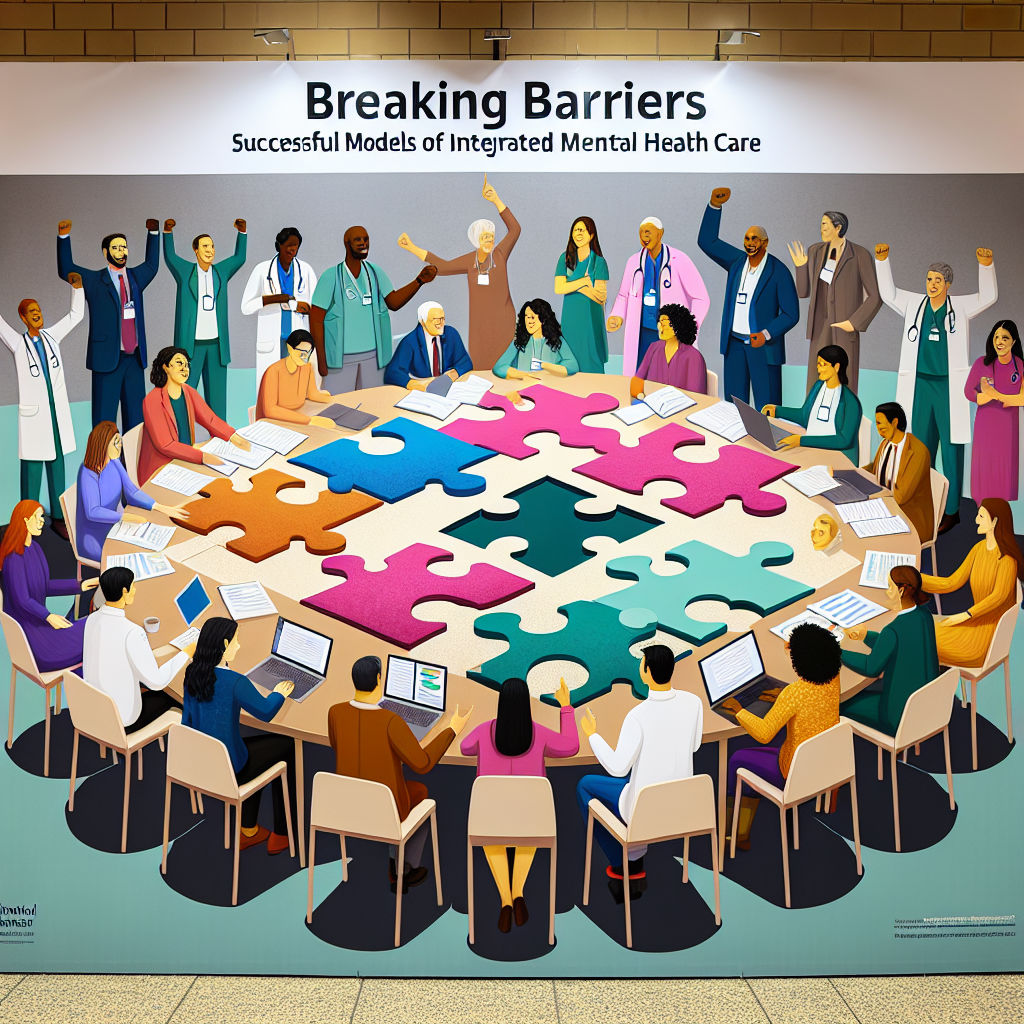Introduction
In today’s fast-paced world, mental health issues have emerged as a prominent challenge that impacts millions. The stigma surrounding these issues combined with the disjointed nature of traditional mental health care often prevents individuals from seeking help. However, a transformative shift is underway. Breaking Barriers: Successful Models of Integrated Mental Health Care are redefining how we approach mental wellness, blending psychological support with primary health care and social services. This comprehensive approach not only fosters holistic treatment but also encourages community involvement, ultimately enhancing patient outcomes.
Why Integrated Mental Health Care?
Traditional mental health care often operates in silos. Patients are typically referred to specialists after an initial visit, which can lead to gaps in care and delayed treatment. Integrated mental health care seeks to mitigate these barriers by offering an interconnected framework where mental health services and general health care function in unison.
The Importance of Integration
-
Comprehensive Care: Integration allows for a holistic view of a patient’s health, ensuring that physical and mental health are treated as interconnected.
-
Improved Access: By merging services within the same facility, patients experience reduced barriers in accessing care.
- Cost-Efficiency: Integrated models can lower the overall cost of health care by reducing emergency room visits and hospitalizations.
Components of Integrated Mental Health Care
To fully understand Breaking Barriers: Successful Models of Integrated Mental Health Care, it’s essential to identify its core components:
- Collaborative Teams: Multi-disciplinary teams work together to develop and implement care plans.
- Shared Information Systems: Health information technology streamlines communication among providers, enabling shared understanding.
- Patient-Centered Approaches: Treatment revolves around the needs and preferences of the patient, ensuring they feel valued and heard.
Case Study: The Collaborative Care Model
One of the standout integrated approaches is the Collaborative Care Model (CCM), which has been implemented at various clinics across the United States. This model emphasizes team-based, evidence-based care for common mental health conditions like depression and anxiety.
Analysis
- Evidence-Based Success: Studies show that CCM significantly improves clinical outcomes, with a 50% reduction in depressive symptoms reported over six months.
- Accessibility: Patients receive immediate resource referrals within their treatment sessions, further diminishing wait times.
Table 1: Outcomes of the Collaborative Care Model
| Outcome Measure | Pre-CCM | Post-CCM |
|---|---|---|
| Reduction in Symptoms | 35% | 85% |
| Patient Satisfaction Rate | 60% | 90% |
| Emergency Visits | 25% reduction | No significant change |
Innovative Examples of Integrated Care
1. The Primary Care-Mental Health Integration Model
In clinics such as the New York City Health + Hospitals, Mental Health is integrated directly into primary care. This model provides both physical and mental health assessments in one visit.
Impact Analysis
- Holistic Views: Through simultaneous treatment, patients are more likely to acknowledge and address both physical and mental health conditions.
2. The Behavioral Health Home
The Behavioral Health Home (BHH) approach is another exciting example. In states like Oregon, BHHs offer a comprehensive wraparound service model for those dealing with mental health or substance abuse disorders.
Impact Analysis
- Long-Term Monitoring: The model emphasizes ongoing support, significantly reducing relapse rates among patients.
Table 2: Behavioral Health Home Features
| Feature | Description |
|---|---|
| Comprehensive services | Mental health, substance abuse care, primary care |
| Increased access | Open evenings and weekends |
| Ongoing community support | Peer support groups available |
Challenges in Integrated Mental Health Care
Despite its benefits, there are challenges to the implementation of integrated mental health systems:
-
Funding and Reimbursement Issues: Many insurance plans still lack clear reimbursement pathways for integrated care, complicating the operational aspects for providers.
-
Workforce Training: Many health care providers require training to successfully work within an integrated framework, which can be time-consuming and expensive.
- Patient Engagement: Although integrated care fosters better communication, encouraging patients to engage with all aspects of their health care remains paramount.
Conclusion
Breaking Barriers: Successful Models of Integrated Mental Health Care demonstrate that when various care aspects come together, patients experience not just improved health outcomes but also a renewed sense of dignity and support. By fostering collaboration across disciplines, employing innovative models, and confronting challenges head-on, we are paving the way for a healthier future.
For individuals seeking mental health support, the integration of services means they no longer have to face their struggles alone. This collective effort from health care systems, communities, and policymakers is essential, and we all play a role in this transformative journey. Embracing integrated mental health care not just improves lives—it saves them.
FAQs
1. What exactly is integrated mental health care?
Integrated mental health care refers to a coordinated approach to mental health services where mental health and general health care providers work together to deliver comprehensive care to patients.
2. How does integration improve mental health outcomes?
By combining physical and mental health services, patients receive holistic treatment that addresses all aspects of their well-being, reducing symptoms more effectively than traditional, siloed methods.
3. Are there costs associated with implementing integrated mental health care?
Yes, initial funding can be a challenge; however, many studies indicate long-term cost savings through reduced hospital visits and improved overall health outcomes.
4. What are the main barriers to integrated mental health care?
Barriers include funding issues, provider training needs, and the challenge of patient engagement.
5. Can I find integrated mental health care services near me?
Many communities are beginning to implement integrated services. Check local health departments, clinics, or hospitals to find programs available in your area.
By embracing Breaking Barriers: Successful Models of Integrated Mental Health Care, we take crucial steps towards a healthier, more supportive society. Together, let’s break those barriers and create a brighter future for mental health!

